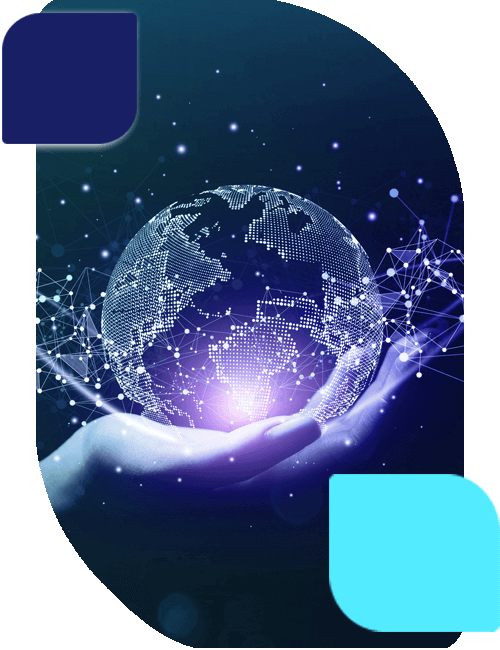Employee communication apps are great for coordinating teams. Team members use these apps to ask questions or share quick details with colleagues. And some companies use these apps to fill shifts, allocate tasks, as well as share their thanks and appreciation.
However, standalone employee communication apps have their problems, too. For example, they can struggle to help organisations identify blocks in workflows, or areas that give rise to issues regularly. Standalone employee communication apps can also make it difficult to manage how information is shared and used (a serious headache for information security managers)
In this article we will be looking at the limitations with standalone employee communication apps, and the benefits of using a real time location system (RTLS), with communications built-in.
Dedicated devices
Using employee communication apps relies on devices being compatible with the software. You might find this easy enough to navigate if your company provides work phones which have managed profiles, however if you rely on a bring-your-own-device policy, you might find employee’s personal phones are not compatible with your app of choice, or that the app doesn’t function as intended across different operating systems.
With a real time location system such as Sense, employees use wearable devices with communication built-in. This means that the devices will always be compatible with the communication element of the software, and updates can be managed with ease.
Capitalise on coordination
Coordinating well requires your available information to be pulled together in one place, to empower decision makers. Without the availability of information, it’s easy to be badly organised. By pulling together location information, outstanding tasks, environmental sensors, as well as communication capability, an RTLS system such as Sense means tasks can be delegated and communicated efficiently and effectively. And if there are any problems along the way? They can be discussed if needed, and where possible, solved with a simple message thread.
Well-coordinated teams should feel a few benefits. For one, improved job satisfaction. Because having to do a job twice; fixing someone else’s errors; or turning up to find someone has already completed a task… all of this can be demotivating. Higher productivity can be achieved, too. As well as reduced overheads from minimising errors.
Being able to specifically identify positive points within your RTLS system data and communicate what is causing these successes to your team can help to double down on quick wins and fix inefficiencies.
Automate
Being able to automate communications from your RTLS system can help keep things running smoothly.
For example, a simple message to say “I have arrived” from an employee to a team leader can be triggered when an employee enters a geofenced area. This can help improve employee safety when off site, or when entering hazardous areas. The system can then also trigger check in alerts to make sure the team leader is keeping tabs on employee safety and reacting quickly if anything goes wrong.
Communications can also be automated to let employees know about new company processes, available shifts, or even that their payslip is ready.
Focused communications – no disruption
But perhaps one of the biggest benefits of integrating communications with a real time location system, is how it helps team communication stay relevant, whilst minimising distractions.
The lack of irrelevant app notifications pinging in the background can cut out excess noise, while messages themselves can even be targeted to employees based on a range of criteria, such as:
- Employee(s) in an area
Managers can send messages to employees in an area. This is helpful for reminders about maintenance, or perhaps a fire alarm drill. Another use case is asking someone to take on an ad-hoc task, or alerting employees about a customer, patient, or colleague who needs assistance.
- Send a message to someone with specific skills
Targeting employees with relevant skills to respond helps to minimise disruption. For example, instead of publicly announcing to the entire staff (and customers) that a supervisor is required, a messaging system such as Sense lets you request discreet assistance from any available Sense Badge wearer with the “supervisor” label, calling them directly to the cash register to lend support.Requesting help from qualified colleagues also helps to ensure the message is answered appropriately, and time isn’t wasted by people who want to help, but may not have the skills to solve the problem.
- Filter out employees on do-not-disturb (as they are on break or mid-task)
It’s important to allow employees time to unwind on break, so putting devices in do-not-disturb mode can filter them out of communications or leave the message in a queue to be delivered when the employee becomes available to receive communications once more.This can also help prevent workers from being disturbed during urgent, high-priority or high-concentration tasks.
Communication is more than messaging
Dedicated messaging apps are usually limited to just being exactly that, messaging services. By enhancing communications, alerts and notifications can be sent that provide updates to staff with more meaningful context.
For example, when you add RTLS, safety alerts can be targeted to those in the affected area. If an employee falls or requires emergency help, then the nearest staff members can be alerted to help. In the event of an emergency, staff can be alerted to evacuate, or to mark themselves safe. General updates even allow organisations to look after staff wellbeing, for example, during a heatwave remind staff to stay hydrated, and also remind staff to take a break.
Improve communications with integration to RTLS
Using a standalone employee communication app doesn’t necessarily help solve problems quickly, or effectively. Standalone apps struggle to help keep information relevant, on task, or specific to a location or individual.
Speak to a Sense consultant to find out more about how we can help you enable employee communications with our real time location system – built especially for organisations who hire busy frontline workers.







